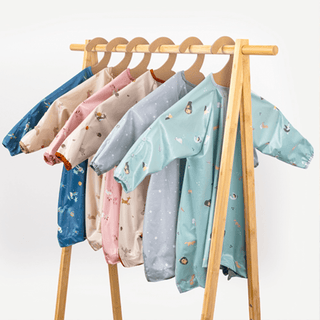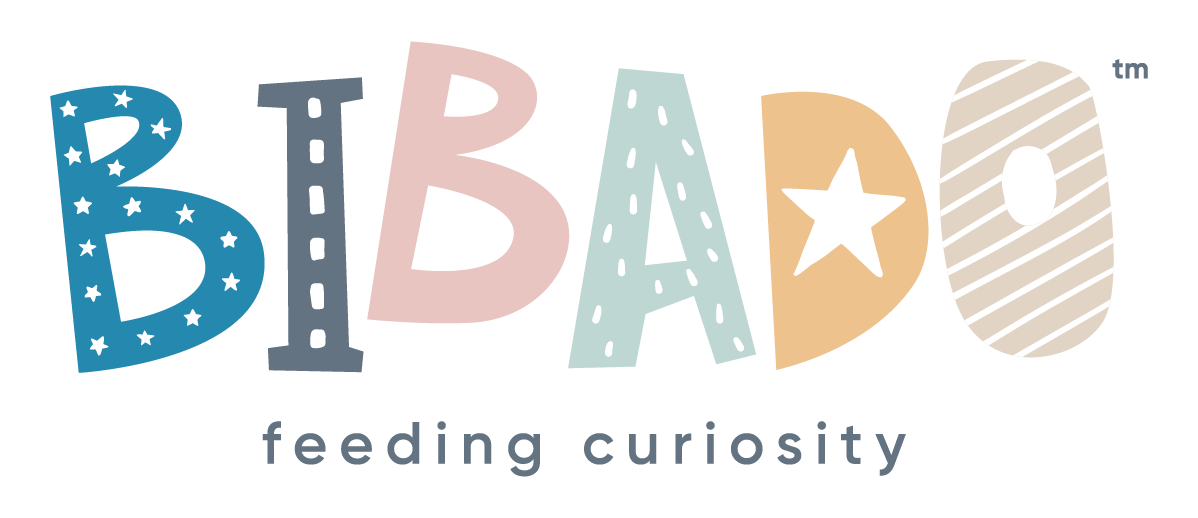Mealtime adventures are better with Bibado! Let our award-winning products make a difference to your weaning journey.
 Shop Now
Shop Now


The inspiration behind the Dippit: our new multi-stage baby spoon and dipper in one

It’s been so exciting to see your reviews and photos using the new Dippit in action, so we thought we’d write a blog and answer some of the questions you’ve asked too!
Why be curious about cutlery?
Since the launch of the Bibado Coverall, I have been driven by a passion to help both parents and babies enjoy happier mealtimes. The Coverall certainly has helped make parents' lives easier; saved on the washing pile, and reduced the time taken to clear up after meals. However, just as importantly it allowed babies to explore, be curious about foods, and hopefully learn more at mealtimes (without their parents having to deal with the messy consequences)!
Babies learn through being curious and having fun, and we were really keen to make baby cutlery more fun and more accessible to babies and young children - whilst also supporting their development and independence to self-feed.
Thinking about cutlery differently
We know babies love to explore things with their mouths, which is a crucial part of their oral development. Whether that be with toys, teethers or anything else they can get their hands on. Often these toys are designed to be sensory beneficial and easy to pick up, so that babies can start exploring a new object and enjoy the sensory development that brings. We wanted to create a cutlery utensil that followed the same principle, whilst still fostering independence and fun during meals, supporting both babies and their parents through these key milestones.
Developmental support for hand and eye coordination, easy pick up, and developing wrist control
Frustration is something we have all experienced when trying to learn something new, and baby’s are no different. We looked at all the things that are frustrating to babies when learning to use cutlery, and included features within the Dippit to help overcome them.
Successful self-feeding begins with baby being able to bring their hands and eyeline to their midline. This makes it much easier to bring their hands to the mouth to eat. Creating a baby spoon which is significantly broader, with multiple grip options (single-handed, two-handed and non-directional) supports babies succeeding at this movement. Its double-ended feature also allows gentle parental assistance when learning to bring the spoon or dipper to the mouth, in a way that does not inhibit the baby’s independence or curiosity.
The baby can also pick it up with two hands gaining maximum control of their movement in getting food into their mouths, and then when they’re more confident they may favour a single-handed grip.
The Dippit is also designed to be easy to pick up for little hands due to its raised handles, and for use with only a grasp grip. The grasp grip, which is present from about 4 months of age, develops much earlier than the pincer grip which develops from around 9 months of age. This means even young babies are likely to be able to pick up their Dippit and have a go, encouraging independence and engagement with learning this new exciting activity.
As well as being easy pick up, the Dippit does not require developed wrist control unlike traditional baby spoon. Wrist control is a vital part of successfully being able to use a regular spoon. However, a utensil that can be used through simply straightening and bending the elbows, allows an ease when bringing the Dippit to their mouths. This allows even babies as young 6 months the chance to do this independently and successfully. We’ve found when testing this baby spoon, those just embarking on their weaning journey, really got to grips (excuse the pun) with the Dippit quickly. Babies were able to get involved when their parents were spoon feeding them more easily, as they reached out to grasp the handles as the food was being guided towards them. In doing so, they were also developing their hand-eye coordination, dexterity and mealtime satisfaction - as the reality is that they got more food in them than they would if they were self-feeding alone!

My nephew Sam, our youngest Biba-family member took to the Dippit from the get-go at 6 months. As he was being fed, he loved to reach out and grasp the handles so that he was feeding himself! His parents and myself loved that the fact that the Dippit was helping him learn about self-feeding and coordination, much more than if he was just being spoon fed.
What is Oral Sensory and Oral Motor Development, and why are they important?
Once we had dealt with all the frustrations that baby’s feel when learning to eat, we also wanted to support their physical and sensory development in as many ways as possible.
Oral Sensory development is how the baby’s mouth perceives sensory information such as taste, temperature and texture of food, as well as deep pressure input from chewing itself.
Oral Motor development is the development of the muscles in the mouth to allow the safe chewing and swallowing of food. The muscles include the lips, the tongue, cheeks and the muscles needed to swallow. All are hugely important, and work together to develop a happy and confident eater - skills which are learnt from the outset when weaning.
The experience of our own children teething at the same time as weaning meant that I placed a strong importance on the addition of a chewable dipper. I included this within the design to to support both sensory development and motor development in one! The texture is designed to be interesting on a sensory level, but also to hold a volume of food which is perfect for when exploring flavours. As a small family business we have the benefit of grandparents who with their wealth of experience always give us some ideas too. Carrie, our CEO's mum, suggested a honey drizzler style shape for the dipper end and we thought that sounded perfect!
That’s the science out of the way… now it's onto the fun mealtime adventure!!
What can you do with a Dipper?
Creating a fun exploratory dipper was really important to allow an opportunity for babies and parents to enjoy exploring flavours and textures together when weaning. The dipper end is designed to be fun to dip into many different flavours and be held at any angle (there is no right or wrong way to hold or use it!). From yoghurt, to fruit purees, through to thick soups and hummus. Plus from working with leading Occupational Therapists and Nutritionists, they’ve reinforced that early flavour and texture exploration are key in preventing picky eating in later life, and we think that should be a fun experience to share together.
A lot of research and development goes into why Bibado creates the products we do, but our aim is always the same: to make happier mealtimes for both parents and babies so you can all enjoy fun and tasty mealtime adventures together as a family.
We hope you love everything about the Dippit. We’d love to know how you and your families are enjoying your mealtime adventures, and do share any photos with the hashtag #bibado on our social pages.
To order your Dippit, head to the Shop
Follow us for more delicious, nutritious bite-size Bibado goodness